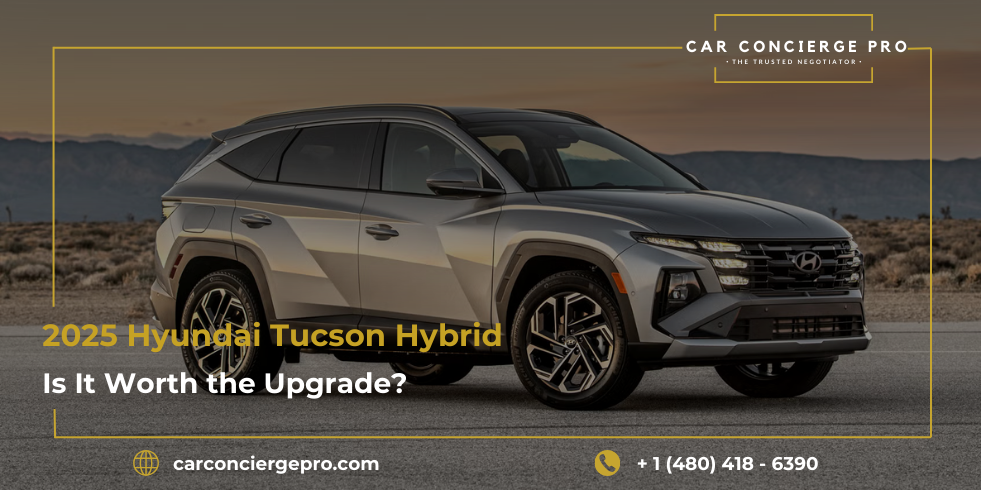The 2025 hyundai tucson arrives with thoughtful updates to tech and usability, and its Hybrid variant promises stronger efficiency without sacrificing everyday comfort or capability. If cross-shopping compact SUVs or weighing whether to step up from the gas-only Tucson, the decision often hinges on real-world MPG, driving feel, tech features, and ownership value over several years. This guide breaks down what’s new, how the Tucson Hybrid performs and sips fuel, how it stacks up to competitors, where it shines in daily life, and when upgrading actually pays off—so the choice feels clear and confidence-inspiring.
Table of Contents
ToggleWhat’s new for 2025: design, screens, controls
Hyundai refreshed the Tucson with an upgraded optional dual-screen layout that stretches across the dash, combining a digital gauge cluster with a large infotainment display while restoring physical knobs for key HVAC and audio functions for quicker, safer use on the move. This tech refresh solves prior touch-only complaints and brings a more premium, modern cabin experience to the entire lineup.
Trims, powertrains, pricing ranges
The Tucson offers a 2.5L gas engine, a conventional hybrid with a turbo 1.6L plus electric motor, and a plug‑in hybrid with a larger battery and stronger output; AWD is standard on Tucson Hybrid and PHEV, and pricing spans from the low-$30,000s to the mid-$40,000s depending on trim and powertrain. Hybrid-specific trims include Blue (highest EPA mpg), SEL Convenience, and Limited, covering budget-friendly efficiency through fully loaded equipment.
2025 Hyundai Tucson Hybrid: specs that matter
Power, battery, drivetrain, performance
The Tucson Hybrid pairs a turbocharged 1.6L four-cylinder with an electric motor for a combined output around 231hp and 258–271lb‑ft, routed through a 6‑speed automatic with standard AWD for confident traction and a natural driving feel. Car and Driver notes the electrified Tucson remains quiet at cruise with solid steering, a comfy ride, and enough punch for everyday merging, estimating a 0–60mph time around low‑7 seconds based on prior testing of a similar setup. The related Plug‑in Hybrid ups combined output to about 268hp, leveraging a larger battery and onboard charging for meaningful EV-only commuting range in the right use case.
Fuel economy: EPA vs real-world
EPA figures show standout efficiency for the Hybrid Blue at 38/38/38mpg, while other Hybrid trims post 35/35/35mpg, reflecting equipment and tire differences. Dealer and owner-reported experiences align, with the Hybrid Blue reaching an estimated 521‑mile tank range at 38mpg combined and other trims around 480 miles at 35mpg, offering strong day‑to‑day savings versus the gas Tucson’s mid‑20s combined mpg. Early real‑world notes commonly land mid‑30s to high‑30s for Hybrid trims in mixed driving, depending on route and climate.
Tech, safety, and warranty updates
For 2025, all Tucsons benefit from a larger standard infotainment display and more intuitive physical controls, with upper trims adding the striking dual 12.3‑inch screen arrangement bundled into a single dash element. Standard wireless Apple CarPlay/Android Auto, available wireless charging, and Digital Key enhance convenience, while driver-assistance coverage includes automated emergency braking with pedestrian detection and lane‑keeping assist; adaptive cruise with lane centering is available on higher trims. Hyundai backs the Tucson with a 5yr/60,000‑mile basic warranty, a 10yr/100,000‑mile powertrain warranty, and complimentary maintenance for 3yr/36,000 miles, which is among the segment’s best value propositions.
Is the 2025 Tucson Hybrid worth the upgrade?
Who benefits most from the hybrid
- Commuters with mixed city/highway routes who value quiet cruising and predictable AWD traction will see meaningful fuel savings versus the 2.5L gas Tucson, particularly in the Hybrid Blue trim at 38mpg combined.
- Drivers in traffic‑heavy areas gain from electric assist at low speeds and smoother stop‑start behavior compared to conventional powertrains.
- Owners keeping vehicles 5–8 years can compound value from Hyundai’s long powertrain warranty and 3‑year maintenance coverage, reducing unpredictability in upkeep.
When the standard gas Tucson makes more sense
If long‑distance highway travel dominates and upfront price is critical, the 2.5L gas Tucson—rated in the upper‑20s combined—may close the cost gap enough that the Hybrid’s premium takes longer to recoup. Shoppers prioritizing the absolute lowest purchase price or preferring front‑wheel drive may also favor the gas model, since Hybrids include standard AWD that adds weight and cost.
What about the Plug‑in Hybrid?
The Tucson Plug‑in Hybrid brings higher output and genuine EV commuting potential if charging at home is reliable, trading a higher price for the ability to cover daily miles on electricity and deliver excellent total economy when regularly plugged in. If home charging is impractical or most trips exceed the EV range without recharging, the standard Hybrid often delivers better value-per-dollar without the charging routine.
Tucson Hybrid vs top rivals
Toyota RAV4 Hybrid
Car and Driver testing places the RAV4 Hybrid near the Tucson on straight‑line pace, with the Toyota recording a 7.3s 0–60mph versus the Tucson Hybrid’s low‑7s in earlier tests, leaving real‑world drivability effectively a draw for most buyers. Tucson’s tech refresh, quieter cruising impressions, and class‑leading warranty tilt value toward Hyundai, while Toyota’s broader dealer network and resale history remain compelling strengths.
Kia Sportage Hybrid
Hyundai notes the only compact rival matching its overall warranty is Kia’s Sportage Hybrid, which shares similar underpinnings and efficiency but typically lacks Hyundai’s complimentary maintenance advantage, making Tucson slightly stronger on ownership coverage out of the gate. Cross‑shop equipment and pricing closely—feature bundles can shift the value equation between the two siblings, but Tucson’s 2025 cabin updates and controls are a notable quality‑of‑life win.
Ownership costs and value
Estimated fuel savings math
- Baseline: Gas Tucson around 26–28mpg combined vs Hybrid 35–38mpg depending on trim and driving mix.
- Assuming 12,000 miles/year and $3.75/gallon:
- Gas at 27mpg ≈ 444 gallons/year ≈ $1,665.
- Hybrid at 35mpg ≈ 343 gallons/year ≈ $1,286; savings ≈ $379/year.
Hybrid Blue at 38mpg ≈ 316 gallons/year ≈ $1,185; savings vs gas ≈ $480/year.
These ballparks align with EPA ranges and dealer estimates for annual fuel cost deltas; actuals vary by route, temperature, and driving style.
Resale, maintenance, and coverage
Hyundai’s 10yr/100,000‑mile powertrain warranty and 3‑year maintenance plan help de‑risk long‑term ownership and can bolster resale appeal, especially in markets that value transferable warranty coverage and low scheduled‑service costs. Tech improvements such as restored physical controls and a larger standard screen also enhance perceived quality and day‑to‑day satisfaction, which can influence used‑market desirability in later years.
Driving impressions and daily usability
Ride, noise, and cabin comfort
Early drives of the updated Tucson Hybrid point to a quiet cabin at speed, composed ride quality, and steering that feels confident without fatigue on longer trips, matching what buyers expect from refined family crossovers. The hybrid system’s smooth handoff between gas and electric aids city refinement, while standard AWD lends all‑weather assurance without sacrificing cabin calm.
Cargo and family practicality
Hyundai’s packaging yields roomy seating for four adults and versatile cargo space; prior instrumented tests fit nine carry‑ons behind the second row and up to 22 with seats folded, reflecting genuinely useful volume for a compact footprint. Hybrid trims maintain everyday usability, and Limited Hybrid configurations still deliver generous cargo capacity and thoughtful small‑item storage solutions for family duty.
Pros and cons
- Pros
- Excellent Hybrid mpg (35–38 combined) with standard AWD; strong real‑world efficiency reports.
- Quiet, comfortable ride and improved physical controls for safer, faster adjustments while driving.
- Segment‑leading warranty plus 3‑year maintenance supports lower, more predictable ownership costs.
- Cons
- Hybrid trims cost more upfront; non‑Blue hybrids return 35mpg combined vs Blue’s 38, narrowing payback for some drivers.
- Gas model’s lower entry price and simpler spec may suffice for heavy highway drivers with stable fuel costs.
- Plug‑in Hybrid value depends on reliable home/work charging; otherwise benefits diminish.
Common pitfalls to avoid
- Assuming all Tucson Hybrids get the same mpg—only the Blue trim delivers the 38/38/38 EPA rating; others are 35/35/35.
- Ignoring AWD’s impact on weight and tire choice; expect modest efficiency changes across trims and regions.
- Overestimating PHEV savings without a charging plan; the standard Hybrid may be a better fit if charging is inconsistent.
- Overlooking warranty and maintenance differences; Hyundai’s coverage is a real, quantifiable advantage vs many rivals.
Mini summary
- The 2025 Tucson Hybrid is quiet, comfortable, and notably efficient, with 35–38mpg combined and standard AWD.
- Tech upgrades, larger displays, and restored physical controls make the 2025 cabin easier to live with.
- Buyers who commute in mixed traffic or plan to own the car for years see the strongest value from the Hybrid—and especially the Blue trim.
- Highway‑heavy or budget‑focused shoppers may be satisfied with the gas Tucson, which carries a lower entry price and solid mpg for the class.
FAQs
Q: What is the EPA fuel economy for the 2025 Hyundai Tucson Hybrid?
A: The Hybrid Blue is rated at 38/38/38mpg, while other Hybrid trims achieve 35/35/35mpg according to Hyundai’s 2025 figures.
Q: How does the 2025 hyundai tucson Hybrid perform compared to the gas model?
A: The Hybrid offers stronger low‑speed torque and standard AWD with an estimated low‑7s 0–60mph capability from earlier testing of similar setups, while maintaining a quiet ride and confident handling.
Q: Is the 2025 Hyundai Tucson Plug‑in Hybrid worth it?
A: It’s best for owners who can charge reliably and want EV‑only commuting with higher total output; otherwise, the standard Hybrid delivers simpler savings and value.
Q: What’s new in the Tucson’s tech for 2025?
A: A larger standard infotainment screen, an optional dual 12.3‑inch screen layout across the dash, restored physical HVAC/audio controls, standard wireless CarPlay/Android Auto, and available wireless charging highlight the updates.
Q: What warranty coverage does the Tucson provide?
A: Hyundai offers a 5yr/60,000‑mile basic warranty, 10yr/100,000‑mile powertrain coverage, and 3yr/36,000‑mile complimentary maintenance; few rivals match this breadth.
Q: Real‑world mpg: what are owners seeing?
A: Owner and reviewer anecdotes often show mid‑30s to high‑30s mpg in mixed driving for the Hybrid, aligning with EPA expectations and trim differences.
Q: How does the Tucson Hybrid stack up vs Toyota RAV4 Hybrid?
A: Performance and efficiency are close; Tucson’s quieter cruising impressions, refreshed tech, and class‑leading warranty tilt value toward Hyundai, while Toyota counters with strong resale and network breadth.




 and Canada
and Canada 




